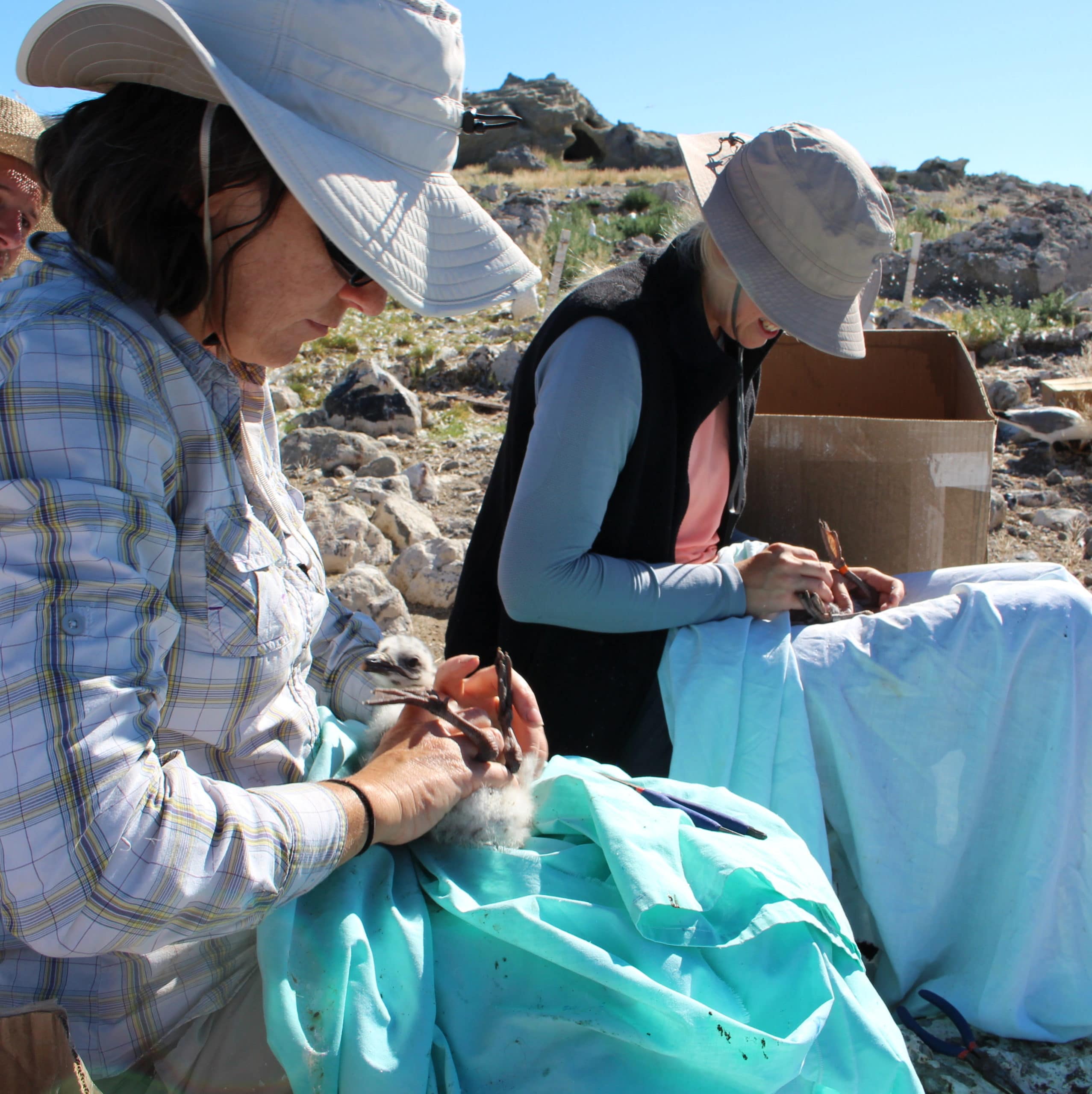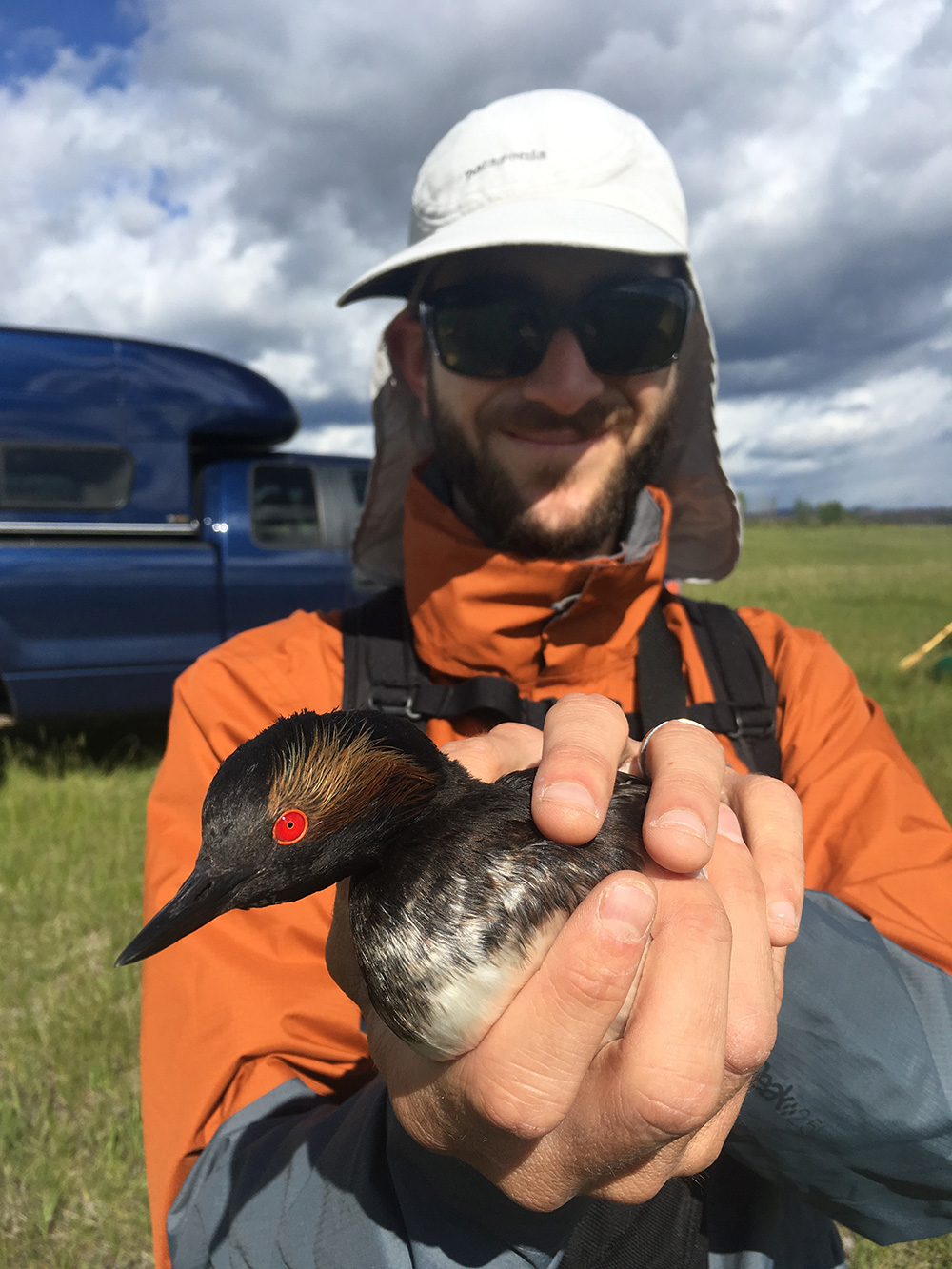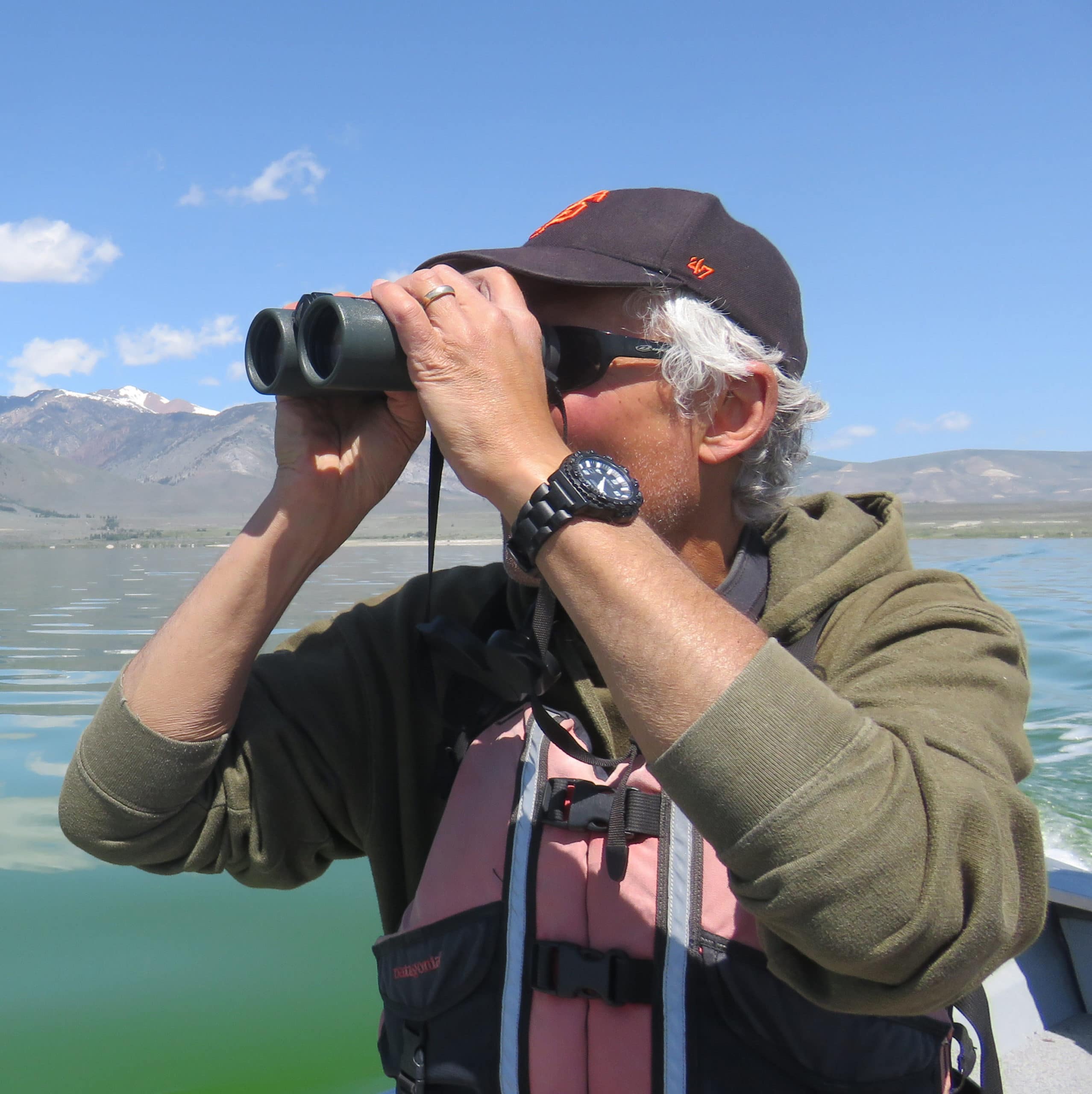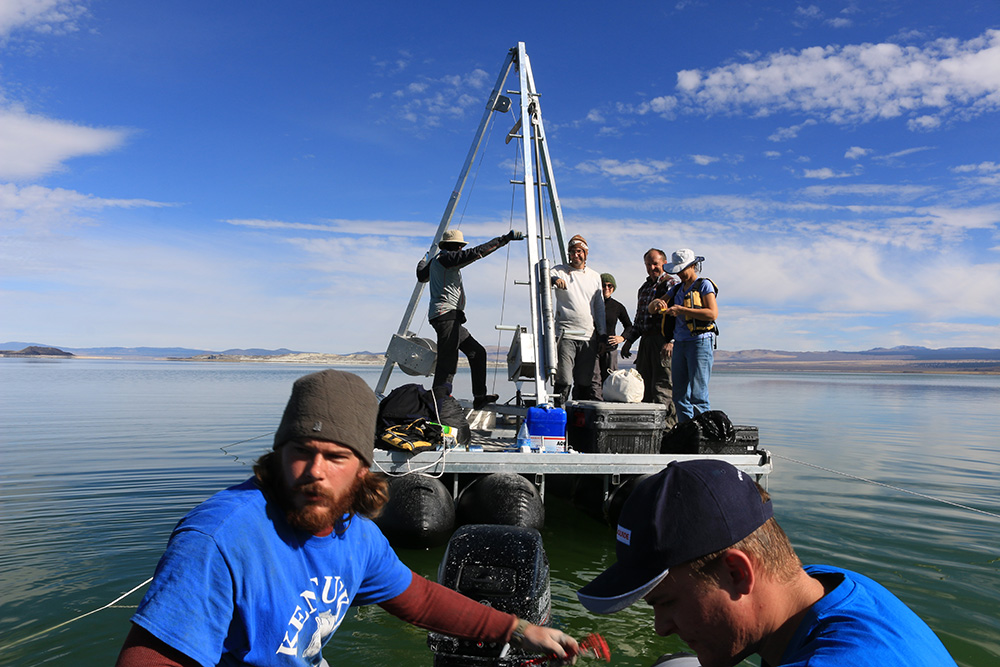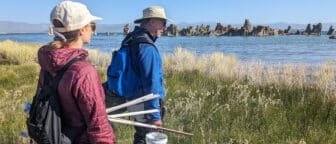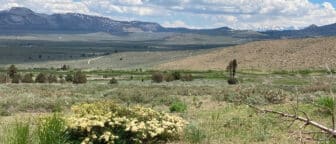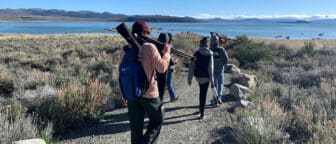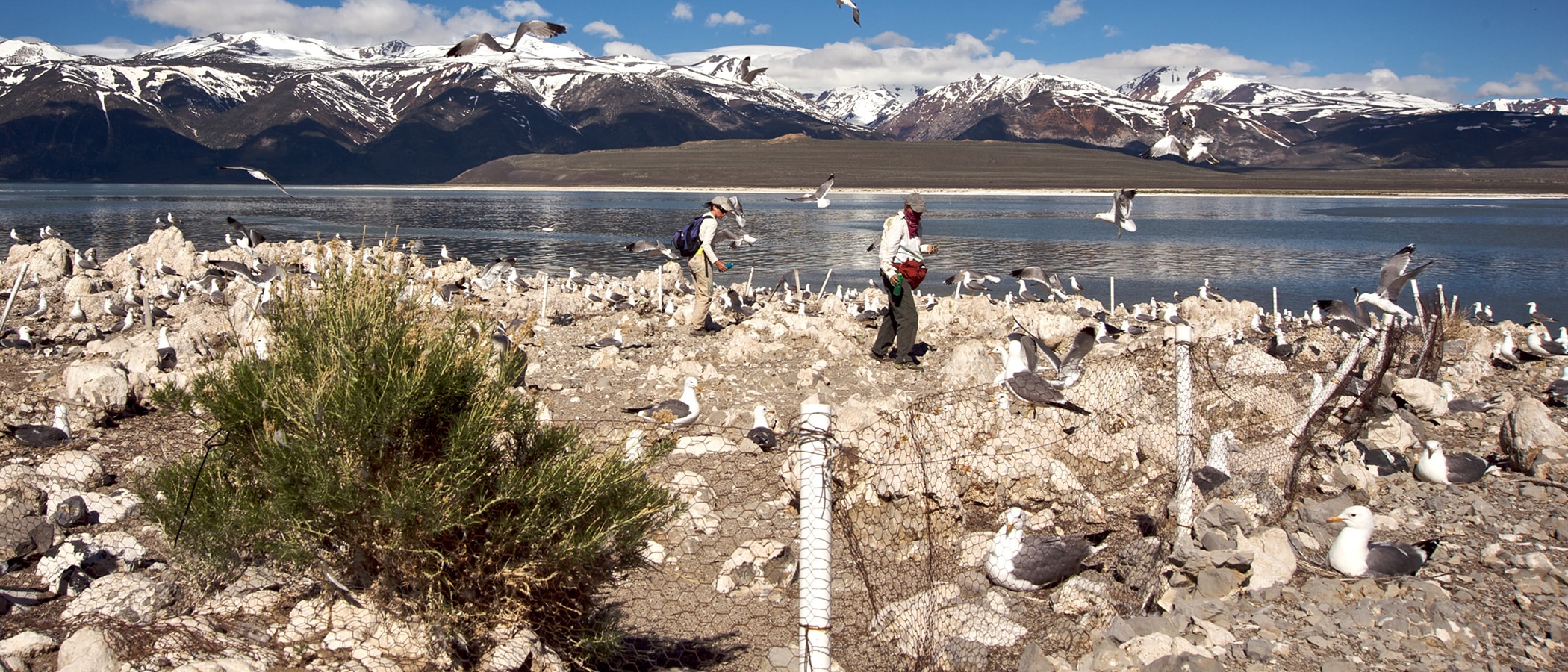
Scientists have been drawn to the Mono Basin ever since geologist Israel Russell studied Mono Lake between 1881 and 1885 and published his paper, Quaternary History of Mono Valley, California.
For a variety of disciplines, from ornithology to paleoclimatology, chemistry to glaciology, the Mono Basin is a spectacular outdoor laboratory.
Current research at Mono Lake
Current research at Mono Lake includes projects that focus on bird species that depend on Mono Lake for their survival and, because they migrate, are also indicators of ecological conditions elsewhere in the world. The Mono Lake Committee supports these research projects with our research boat, staff time, and funding. Explore the Mono Basin Clearinghouse to learn about additional research projects in the area or see more below.
More research
Ornithology research
More than 300 species of birds have been observed in the Mono Basin, and it’s a key location on the Pacific Flyway for many migratory species. With such diverse and abundant bird life, Mono Lake is a popular place for bird research.
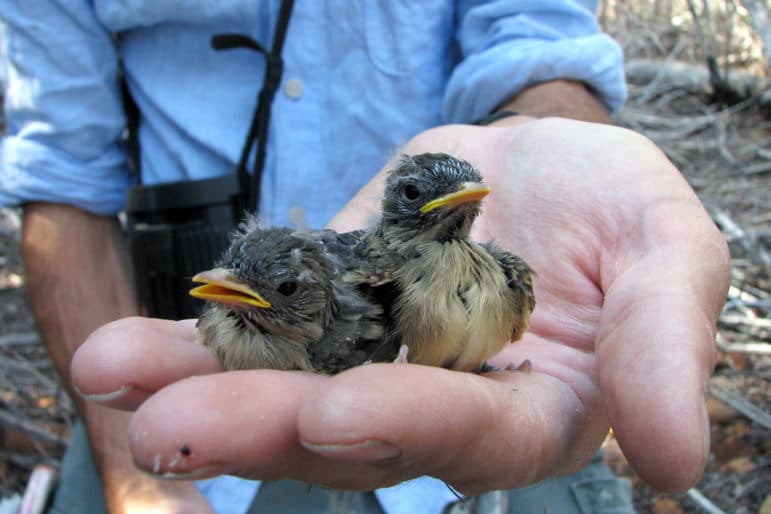
Population and Habitat Analyses for Greater Sage-Grouse (Centrocercus urophasianus) in the Bi-State Distinct Population Segment
US Fish & Wildlife Service, Bureau of Land Management, California Department of Fish & Wildlife, Nevada Department of Wildlife, US Forest Service
Stress-Induced Hyperglycemia in White-throated and White-crowned Sparrows: A New Technique for Rapid Glucose Measurement in the Field
Jessica Malisch, St. Mary’s College of Maryland, Department of Biology
The Nest Predator Assemblage for Songbirds in Mono Lake Basin Riparian Habitats
Quresh Latif, Sacha Heath, Grant Ballard, PRBO Conservation Science
Geology research
The Mono Basin’s volcanic composition, evident glacial activity, and steep Sierra Nevada escarpment make it an excellent place to study geology.
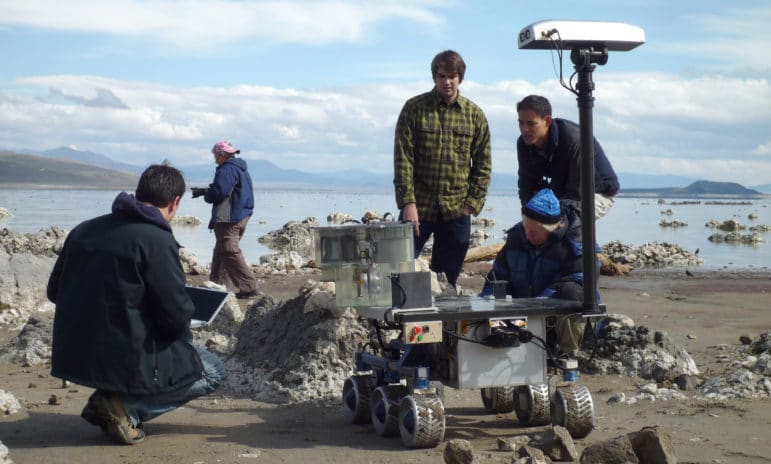
Extent of the Last Glacial Maximum (Tioga) Glaciation in Yosemite National Park and Vicinity, California
Greg Stock, Clyde Wahrhaftig, Reba McCracken, Peri Sasnett, and Andrew Cyr, US Geological Survey and National Park Service
Late Glacial and Deglacial Fluctuations of Mono Lake, California
Guleed Ali, Columbia University
Extreme and persistent drought in California and Patagonia during medieval time
Scott Stine, California State University, East Bay
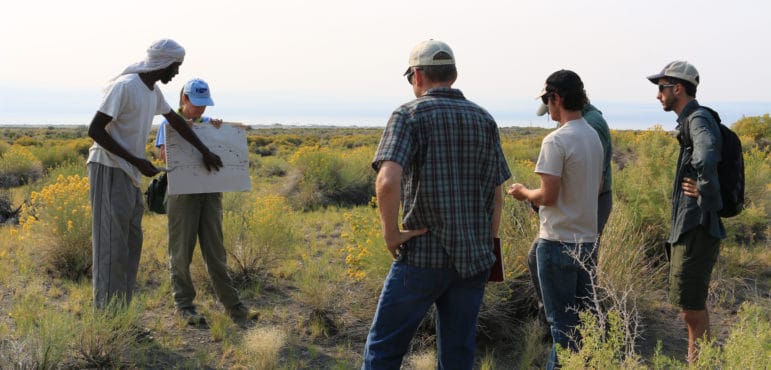
Other areas of study
Studies have been done in the Mono Basin in the fields of limnology, restoration, climatology, economics, anthropology, ecology, hydrology, and more. Highlights are below and more can be found on the Mono Basin Clearinghouse.
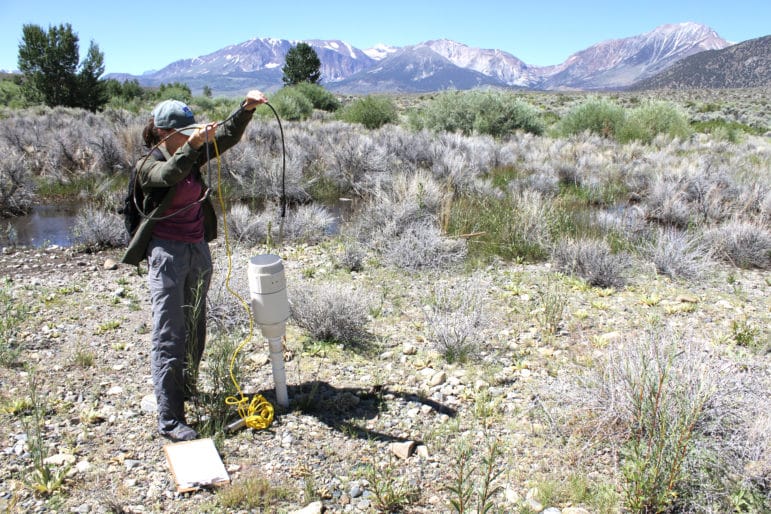
Response of high-elevation limber pine (Pinus flexilis) to multiyear droughts and 20th-century warming, Sierra Nevada, California, USA
Constance Millar, Robert Westfall, and Diane Delany, US Forest Service
Alkali fly population monitoring
David Herbst, Sierra Nevada Aquatic Research Laboratory, University of California
Peak Flow Predictive Model for Lee Vining Creek
Peter Vorster & Greg Reis, Mono Lake Committee
Grinnell Resurvey Project: 1914-1920 Mono Lake Transects
Museum of Vertebrate Zoology, UC Berkeley
Economic Analysis of the Third Annual Mono Basin Bird Chautauqua
River Gates, PRBO Conservation Science and Lisa Cutting, Mono Lake Committee
Halophilic alkophilic bacteria
Richard B. Hoover, NASA
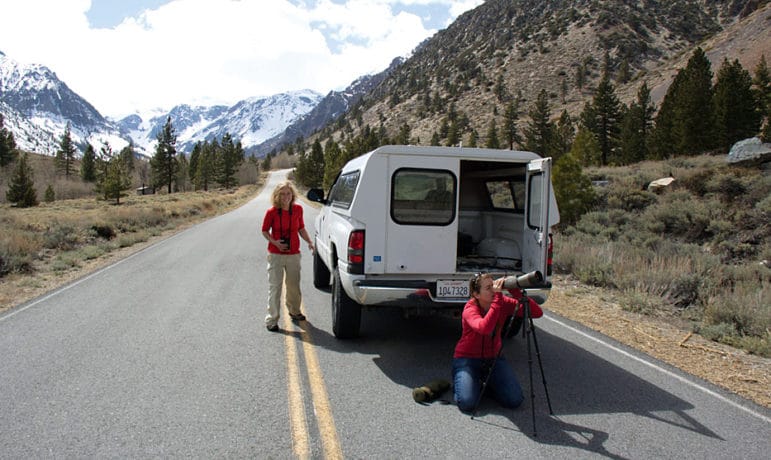
The Mono Lake Committee supports research
Scientific research is the foundation of the effort to protect Mono Lake, the base for the Mono Lake Committee’s policy positions, a guide for restoration, and inspiration for understanding Mono Lake.
related resources: Mono Basin Field Station | Mono Basin Clearinghouse | Refreshing ‘Ologists lecture series
Top photo by Russ Taylor.

